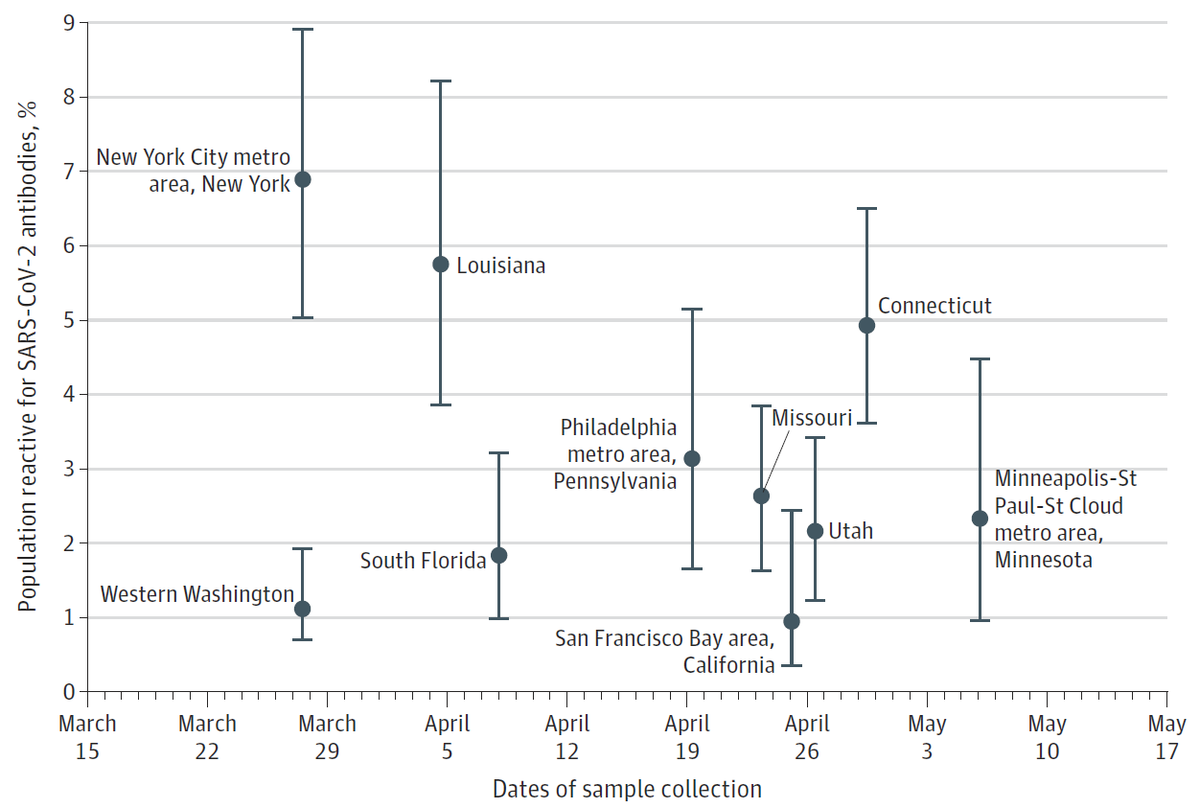New paper out today from CDC that is so problematic I want to cry.
(great material for @callin_bull)
Quick thread.
jamanetwork.com/journals/jamai…
We've known since Feb(!) that only fraction of SARS-CoV-2 infections cause illness & less cause severe illness. This led to huge uncertainty & confusion about fatality of #COVID19:
& contributes to Qs about herd immunity:
)
You can get serop too high if you invite people to join study (e.g. w/ a facebook ad) & those w/ symptoms are more likely to join; also if you sample people who have high risk jobs.
Compare, e.g. seroprev of hispanic & white people in NYC. If you didn't know you were sampling different pops you could get very diff answers.
sciencedirect.com/science/articl…

Amazingly bad.
Note: CDC previously wrote a book on how to collect random sample from communities (cdc.gov/nceh/casper/ov…) so we know they know how to do it & how important it is.
I know of no reasonable biological reason that serop would be much higher in kids in 3 places but lower in 4. But I can imagine many BS reasons!
Alternatives:
If the patterns fit your pre-conceived ideas, they are reasonably robust.
If they contradict it, they are problematic.
Why collect bad data in the 1st place?
Instead of designing proper study w/ randomized sample (see e.g. ), they literally just took blood samples they already had lying around.
Also, one bonus gift for you...
Did you know that over time fewer people have antibodies? Waning Ab! (joke)
That's what this graph seems to show. @callin_bull this one is for you!
There are so many ways this could have been presented in informative way. This isn't one of them.

cdc.gov/coronavirus/20…
Please read the book you wrote on randomized sampling & conduct a study that would actually be useful in helping us understand this pandemic.
Sincerely,
me







